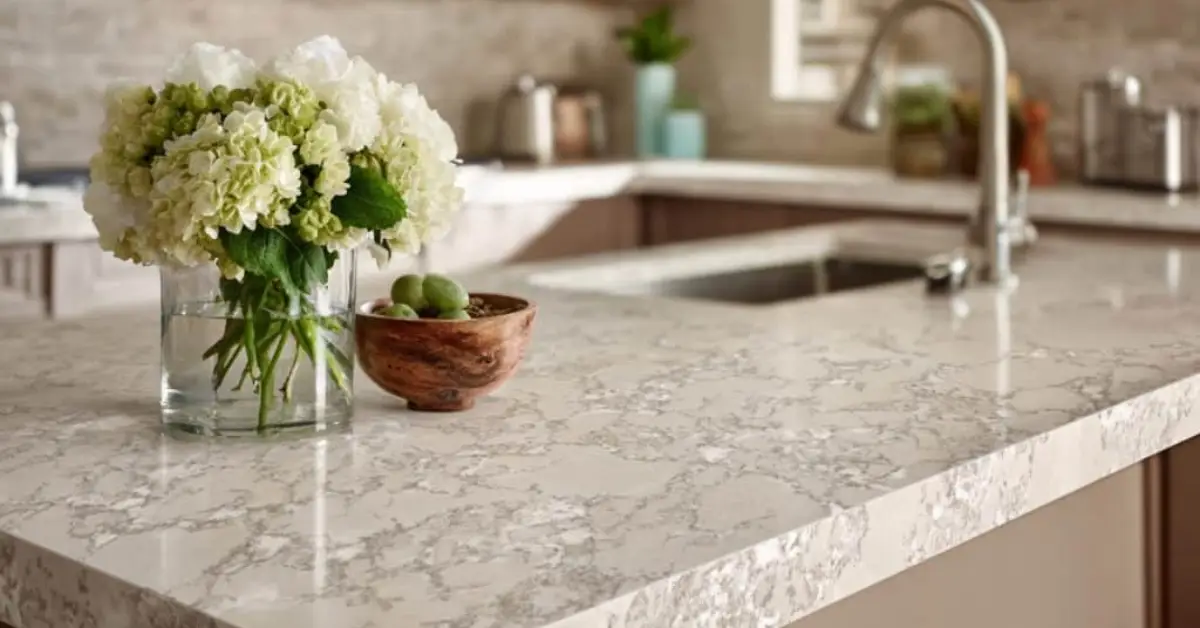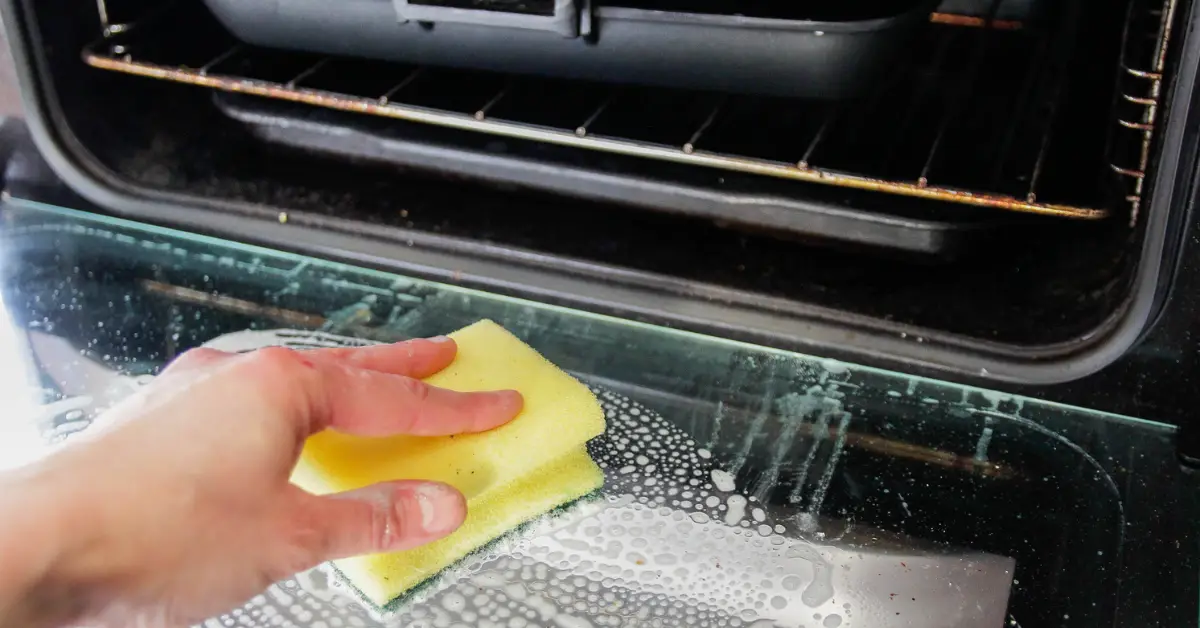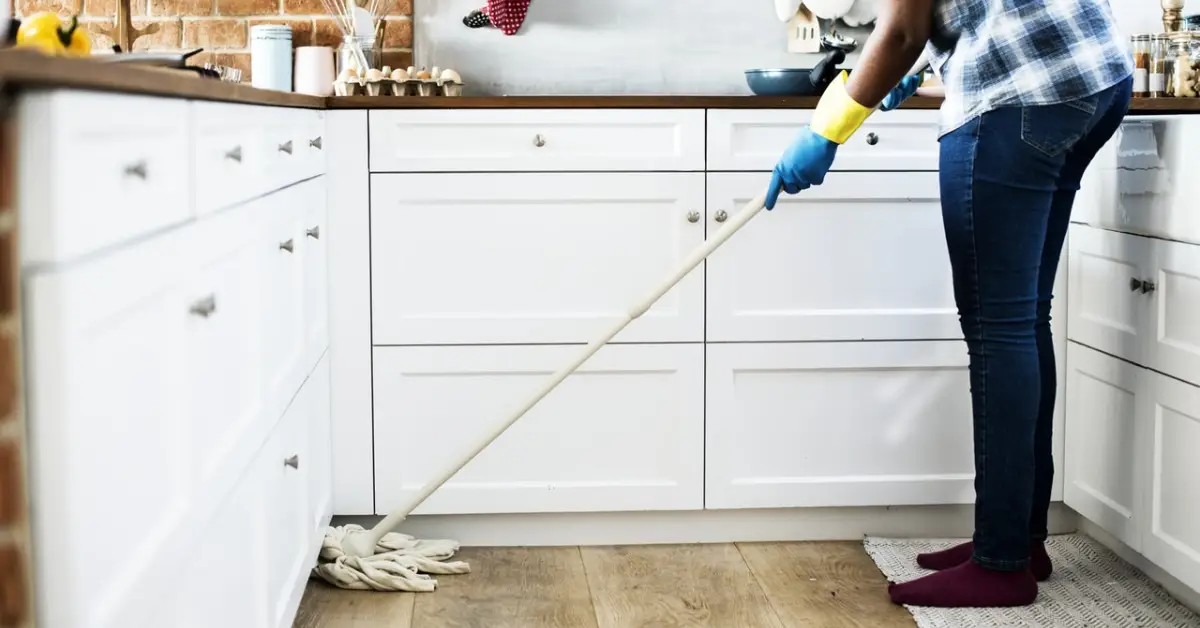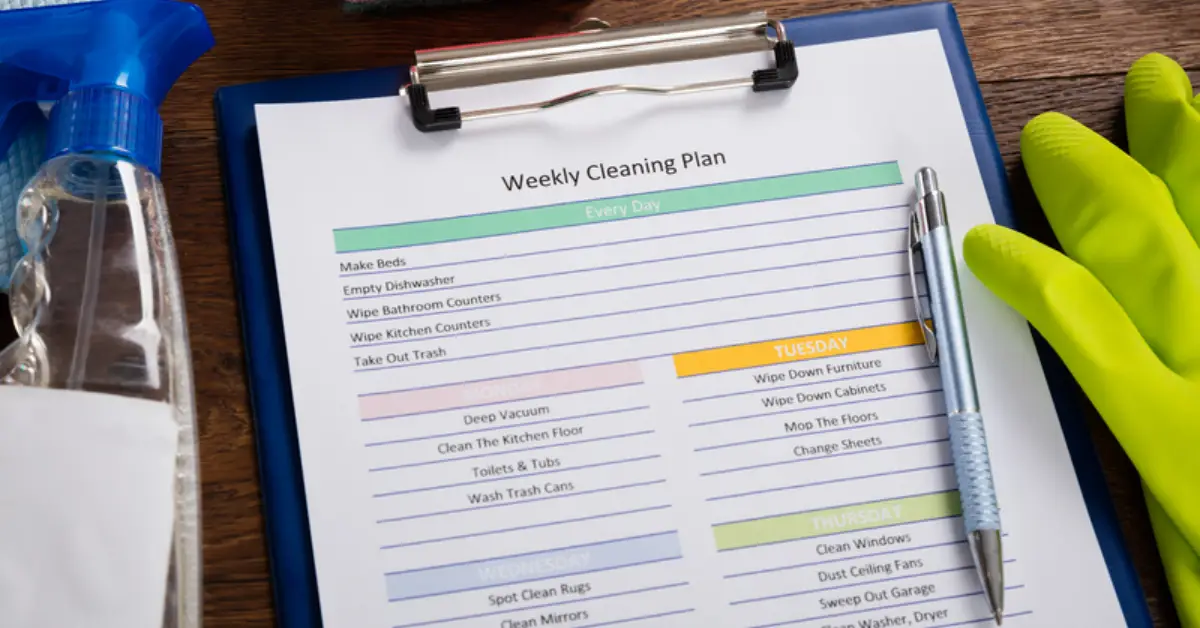10 Essential Kitchen Maintenance Tips for Lasting Cleanliness
Keeping your kitchen clean might feel like an endless cycle of wiping counters, doing dishes, and scrubbing stains. Trust me, I get it — the kitchen is one of the busiest areas in your home, and it can get messy fast. But what if I told you that with a few simple maintenance habits, you could make cleaning feel less overwhelming and more like second nature?
Think about this: a clean kitchen not only saves you time but also keeps your food safe and your space inviting. It’s about creating an environment that’s both functional and pleasant to be in. Whether you’re preparing a quick dinner after work or hosting friends for a special meal, a clean kitchen makes all the difference.
In this guide, I’m sharing 10 practical kitchen maintenance tips that’ll help you keep your kitchen cleaner for longer — and spend less time cleaning in the process. No more scrambling every night to get the counters spotless or worrying about hidden grease and grime. These tips will save you time, energy, and a lot of stress. Ready to dive in?
1. Clean as You Go: The Secret to a Stress-Free Kitchen
We all know how quickly the kitchen can go from spotless to chaotic. As soon as you start cooking, things pile up — dirty dishes, spills, and food scraps. But what if I told you that the secret to maintaining a clean kitchen isn’t scrubbing everything at the end of the day? It’s about cleaning as you go. This simple habit helps you avoid the mess from accumulating and saves you tons of time.
- The Concept of Cleaning While Cooking: The idea here is simple: don’t wait until the end of your meal prep to start cleaning. Instead, clean as you cook. Wipe down counters as you go, rinse dishes after using them, and clean small messes right away. This helps prevent the clutter from building up and makes post-cooking clean-up a breeze.
- Step-by-Step Tips for Managing Dishes, Counters, and Spills:
- Dishes: As soon as you’re done with a utensil or a bowl, give it a quick rinse and place it in the dishwasher. It’ll save you from having to tackle a mountain of dishes later.
- Counters: While cooking, use a wet cloth or sponge to quickly wipe down any areas you’ve used. If something spills, address it immediately before it dries or stains.
- Spills: If something splatters or spills on the stove, wipe it up while it’s still fresh. A quick swipe will prevent harder scrubbing later.
- Time-Saving Benefits of Cleaning as You Go: This technique cuts down on the time and effort you need for the final clean-up. When you’re constantly cleaning, you won’t feel overwhelmed by the mess, and you’ll save yourself the stress of dealing with a huge pile of dishes or counters full of crumbs.
For more tips on maintaining a clean kitchen as you cook, check out these Pioneer Woman’s Tips for a cleaner, easier cooking experience.
2. Invest in Easy-to-Clean Surfaces

When it comes to kitchen cleaning, the surfaces you choose play a huge role in how much time you’ll spend scrubbing later. Some surfaces are naturally more resistant to stains, spills, and grime, while others seem to attract dirt. If you’re looking for long-term solutions that make cleaning easier, investing in easy-to-clean surfaces is a game-changer.
- Examples of Easy-to-Clean Surfaces:
- Quartz: A non-porous, durable surface that resists stains and is incredibly easy to wipe clean.
- Marble: A beautiful, timeless option that, when sealed properly, makes cleaning a breeze.
- Stainless Steel: A sleek, easy-to-maintain surface that’s perfect for counters and appliances. It resists bacteria, cleans quickly, and always looks shiny.
- The Importance of Non-Porous Materials: Non-porous surfaces, like quartz and stainless steel, don’t absorb spills, oils, or liquids. This is crucial for preventing stains and grime buildup that can be tough to scrub off later. With porous materials like wood or granite, spills can seep in, making them harder to clean and maintain.
- Budget-Friendly Alternatives:
- If you’re working with a tight budget, consider laminate countertops that mimic the look of granite or marble. Laminate is cost-effective, easy to clean, and resistant to most stains.
- Ceramic tiles can also offer an affordable and low-maintenance solution. They’re durable, stain-resistant, and come in a variety of colors and patterns.
3. Use Proper Storage Solutions to Reduce Clutter
A cluttered kitchen can make even the smallest mess feel overwhelming. When your drawers, counters, and cabinets are packed to the brim, it’s tough to stay organized, and even harder to keep the space clean. Investing in storage solutions is a simple yet effective way to keep your kitchen tidy and minimize cleaning time.
- Organizing Tools and Gadgets:
- Use drawer dividers and organizers to neatly store utensils and tools. This keeps everything in place and reduces the chance of dirty dishes or crumbs piling up in open drawers or cabinets.
- Store small appliances and gadgets in dedicated spaces, so they don’t clutter up your counters or cabinets.
- Use of Transparent Containers and Labels:
- Keep dry goods like flour, sugar, and grains in clear, airtight containers. This not only makes them easy to access but also helps keep your pantry clean and organized.
- Label your containers for easy identification. It’ll make grabbing what you need quicker and prevent spills or cross-contamination.
- Importance of Regularly Purging Expired Food Items and Unnecessary Utensils:
- It’s easy for expired cans or old food to collect over time. Take a few minutes each month to check for expired items and toss them out.
- Similarly, declutter your kitchen tools by donating or discarding utensils that you rarely use. A minimalist kitchen is easier to clean and maintain.
By keeping your kitchen organized, you’re not only reducing clutter but also preventing hidden messes from building up in corners or behind closed doors. It’s a simple way to make your kitchen feel fresh and easier to maintain.
4. Master the Art of Regular Deep Cleaning
Deep cleaning is one of those tasks that often gets pushed to the back burner, but it’s essential for maintaining long-term cleanliness in your kitchen. Without deep cleaning, those hard-to-reach areas and appliances can collect grime, food particles, and bacteria that you can’t see but definitely don’t want lingering around. In this section, I’ll guide you through how to tackle these tasks efficiently.
- Importance of Deep Cleaning Kitchen Appliances (Fridge, Stove, Oven):
- The fridge is a breeding ground for spills, expired items, and crumbs. It’s essential to remove old food, clean shelves, and wipe down surfaces regularly.
- The stove and oven are prone to grease and food splatters. Clean oven spills as soon as they happen, and make sure to deep clean it monthly to avoid buildup.
- Don’t forget the microwave! A simple wipe-down with a vinegar and water solution will help remove food splatters and odors.
- Cleaning Inside Cabinets and Behind Large Kitchen Appliances:
- Cabinets are often overlooked, but they accumulate dust, grease, and food particles. Take everything out, wipe down shelves, and vacuum the corners.
- Large appliances like the fridge, dishwasher, and stove need to be pulled out for a deep clean. Dust and food debris accumulate behind them, which can lead to pests and unpleasant odors.
- Recommended Products for Deep Cleaning Tasks:
- Use all-purpose cleaners for countertops and cabinets. For tough stains, consider specialized products for appliances like oven cleaners or stainless steel polish.
- A good degreaser is essential for cleaning stove tops and range hoods.
For additional tips on deep cleaning your kitchen, check out The Spruce, which provides helpful advice on keeping your kitchen clean for longer.
5. Tackle Grease and Grime with the Right Cleaning Products

Grease and grime are kitchen challenges that never seem to go away, especially around cooking areas like the stove and countertops. Knowing the right products to use can save you hours of scrubbing and leave your kitchen sparkling clean without harming the environment. This section will help you choose the right tools for the job.
- Natural Cleaning Solutions (Baking Soda, Vinegar):
- Baking soda is a miracle cleaner — it can scrub, deodorize, and lift grease from almost every surface. Sprinkle it on countertops or mix it with water to make a paste for tougher stains.
- Vinegar is a powerful natural cleaner and disinfectant. It’s great for cutting grease and removing odors in the kitchen. You can use it on stainless steel or as a general-purpose cleaner when diluted with water.
- Specific Grease-Cutting Products for Different Surfaces:
- For stovetops, use a degreaser or dish soap with grease-cutting properties. Look for products designed for specific surfaces like ceramic, glass, or stainless steel.
- Try non-toxic, eco-friendly products for cleaning grease in the kitchen to avoid harsh chemicals, especially in areas where food is prepared.
- Tips on Using Cleaning Products Safely for the Environment:
- Always choose non-toxic, biodegradable products when possible. Many household cleaners contain chemicals that are harmful to the environment, so opting for natural solutions will benefit both your kitchen and the planet.
- Ensure proper ventilation when using cleaning products, especially stronger ones, to keep the air fresh and safe.
6. Keep Your Kitchen Air Fresh and Odor-Free
A fresh-smelling kitchen makes the entire space feel cleaner, and it’s essential for maintaining a pleasant environment. Kitchen odors can linger and mix with cooking smells, which only adds to the feeling of clutter and mess. Keeping the air fresh isn’t just about using air fresheners — it’s about improving ventilation and using natural products that neutralize smells.
- Use of Natural Air Purifiers Like Baking Soda, Activated Charcoal:
- Baking soda is an excellent odor absorber. You can place an open box in the fridge, under the sink, or in the trash can to absorb any unpleasant smells.
- Activated charcoal is another natural air purifier. It’s great for absorbing odors from your kitchen, especially if you store it in high-traffic areas like near the garbage or sink.
- Regular Ventilation to Avoid Trapped Odors:
- Make sure to open windows and use exhaust fans while cooking to ensure that any cooking odors don’t get trapped in your kitchen.
- After cooking, leave windows open for a few minutes to let the air circulate, especially if you’ve used strong-smelling spices or oils.
- Tips for Keeping Your Trash Area Clean and Odor-Free:
- Regularly empty your trash cans, and wipe them down with a disinfecting wipe to prevent odors from building up.
- Use trash bags that lock in odors and consider adding a baking soda pack in the bottom of your trash can to absorb smells.
7. Regularly Replace Dish Towels and Sponges
Dish towels and sponges are notorious for harboring bacteria and germs — a quick but often overlooked source of contamination in the kitchen. If you’ve ever used a dish towel that smells musty or noticed a sponge turning grimy, you know exactly what I mean. Regularly replacing and disinfecting these items can significantly improve kitchen cleanliness and hygiene.
- Recommended Washing Frequency for Towels and Sponges:
- Dish towels should be washed after every use, especially if they’ve come in contact with raw food, spills, or greasy surfaces. For sponges, replace them at least once every two weeks, or sooner if they start to look worn or smelly.
- If you notice your dish towel smelling bad after a day’s use, it’s time to wash it — even if it’s not visibly dirty.
- Alternatives to Sponges:
- Consider using dish brushes instead of sponges. Brushes are easier to clean, dry faster, and are less likely to harbor bacteria.
- Cloth towels are another great alternative. They’re more durable, and you can use them for multiple tasks, from wiping down counters to drying dishes. Plus, they are easier to wash than sponges and don’t hold onto grime.
- How to Disinfect These Items Effectively:
- For dish towels, wash them in hot water with detergent. For a deeper clean, add a cup of vinegar or a disinfectant to the load.
- Sponges can be disinfected by microwaving them for 1-2 minutes (make sure they are damp), or soaking them in a solution of water and bleach (1:10 ratio) for a few minutes. Replace them if they start to smell even after cleaning.
For more tips on maintaining a clean kitchen, you can also explore our article on 9 Hidden Germ Havens in Your Kitchen and How to Clean Them Fast. It will guide you in identifying and cleaning the hidden germs in your kitchen to keep it safe and sanitary.
8. Don’t Forget the Floors: Keep Them Clean and Safe

Floors are one of the most overlooked areas when it comes to daily kitchen cleaning. However, the kitchen floor is exposed to all kinds of spills, crumbs, and grease. Not cleaning them regularly not only makes your kitchen look messy but can also create a slipping hazard. Here’s how to keep your floors clean and safe.
- Best Floor Cleaning Methods for Tiles, Wood, and Laminate:
- Tiles: Use a mild all-purpose cleaner or a specialized floor cleaner to remove grime from grout. A steam mop works well to sanitize tile floors.
- Wood: Wood floors require gentle care. Use a wood floor cleaner and avoid soaking the floor with excess water. A microfiber mop is perfect for this.
- Laminate: For laminate floors, a mixture of water and vinegar works wonders. Avoid harsh chemicals or excess water, as it can damage the laminate surface.
- Using Mats and Rugs to Protect High-Traffic Areas:
- In high-traffic areas like near the stove or sink, consider using mats or rugs. They not only make cleaning easier but also protect your floor from scratches and spills.
- Be sure to clean the mats and rugs regularly to avoid them becoming sources of dirt.
- Why Regular Sweeping or Vacuuming Is Essential:
- Regular sweeping or vacuuming is necessary to pick up crumbs, dirt, and debris that can get ground into the floor and make cleaning harder. Aim to sweep or vacuum your kitchen floor every day, especially after meals.
To keep your kitchen free of clutter, especially when managing your cleaning routines, 15 Expert-Approved Kitchen Cabinet Tricks for Clutter-Free Living can offer some great organization solutions that will help you save time while cleaning.
9. Prevent Future Messes with Smart Kitchen Habits
Prevention is the most effective way to keep your kitchen clean and reduce the need for constant deep cleaning. It’s all about building good habits that make the cleaning process smoother and quicker in the long run.
- Encouraging Readers to Establish Cleaning Routines:
- Start by dedicating a few minutes each day to simple tasks, like wiping down countertops or putting dishes in the dishwasher. Make these tasks part of your daily routine so you don’t have to spend hours cleaning later on.
- Set a time, even if it’s just 5 minutes, every evening to tidy up before bed. This will prevent messes from accumulating overnight.
- Using Lids, Covers, and Trays to Prevent Spills and Splashes:
- Whenever you cook, cover pots and pans with lids to prevent splattering. This small habit can drastically reduce the amount of mess on your stove and counters.
- Use trays when cooking or prepping to contain any mess that might happen. This will help catch spills before they spread across the counter.
- Habitual Cleaning Strategies (Wiping Surfaces After Every Use, Quick Sweep Before Bed):
- Wipe down surfaces immediately after using them. This will make it much easier to clean, and you won’t need a major cleaning session later.
- Sweep the kitchen floor at the end of the day. It takes just a few minutes but makes a huge difference in how clean your kitchen looks.
Want to add a splash of greenery to your kitchen while also keeping it functional? Check out our article on 10 Kitchen-Friendly Houseplants You’ll Regret Not Buying Sooner to explore plants that can improve both your kitchen’s aesthetics and air quality.
10. Stay Consistent: The Key to Long-Term Cleanliness

Consistency is the backbone of any successful kitchen maintenance routine. The more regularly you clean, the less effort it takes to maintain a pristine kitchen. This section emphasizes how staying consistent with your kitchen cleaning habits will reduce overall effort and keep your space in great shape.
- Creating a Weekly Schedule for Maintenance Tasks:
- Set a schedule for cleaning tasks like wiping down cabinets, deep cleaning appliances, and scrubbing floors. Having a set routine makes these tasks easier and less time-consuming.
- Don’t wait for the kitchen to get messy before cleaning it. Clean regularly to stay ahead of the mess.
- Setting Reminders for Deep Cleaning Tasks:
- Use phone reminders or a cleaning calendar to remind you to tackle deep cleaning tasks, such as cleaning the oven or organizing your pantry. Setting reminders ensures you don’t forget those occasional but essential tasks.
- How Consistency Reduces Overall Cleaning Time in the Long Run:
- The more consistently you clean, the less time you’ll spend each session. A quick 10-minute daily cleaning routine can keep your kitchen tidy and cut down on the need for long, exhausting cleaning marathons.
Conclusion: A Clean Kitchen is an Ongoing Commitment
Maintaining a clean kitchen isn’t a one-off task — it’s an ongoing commitment. These 10 tips are just the beginning of creating a kitchen that stays clean and organized long-term. Consistency is key, and the more you make these habits a part of your daily routine, the easier kitchen maintenance will become.
A clean kitchen isn’t just about aesthetics; it’s about creating a space that’s functional, safe, and pleasant to cook in. By sticking to a regular cleaning routine, you’re investing in a healthier environment and saving time in the long run.
Regular cleaning also ensures that your kitchen remains a place where you can comfortably prepare meals without feeling overwhelmed by mess. A little bit of upkeep every day goes a long way!
Remember, consistency is what makes all the difference. Incorporating these 10 simple habits into your routine will keep your kitchen looking fresh and feeling stress-free. You don’t have to spend hours cleaning every week — just follow these small steps each day and enjoy a clean kitchen without the hassle.
What’s your secret to keeping your kitchen clean? Share your best kitchen maintenance tips in the comments below!
For more helpful tips and expert advice on maintaining a beautiful home, check out Build Like New.
Disclaimer: The tips and advice provided in this article are for general informational purposes only. Always follow manufacturer instructions for cleaning products and appliances. Build Like New is not responsible for any damage or issues arising from the use of the suggested methods.


